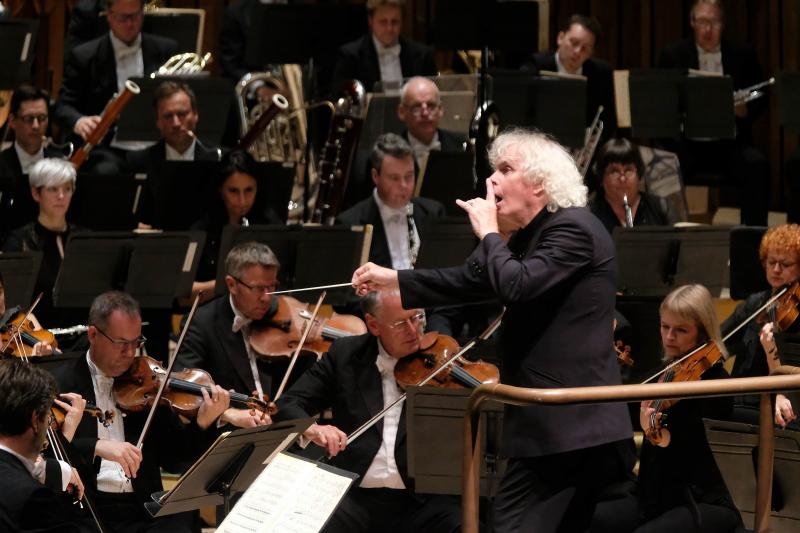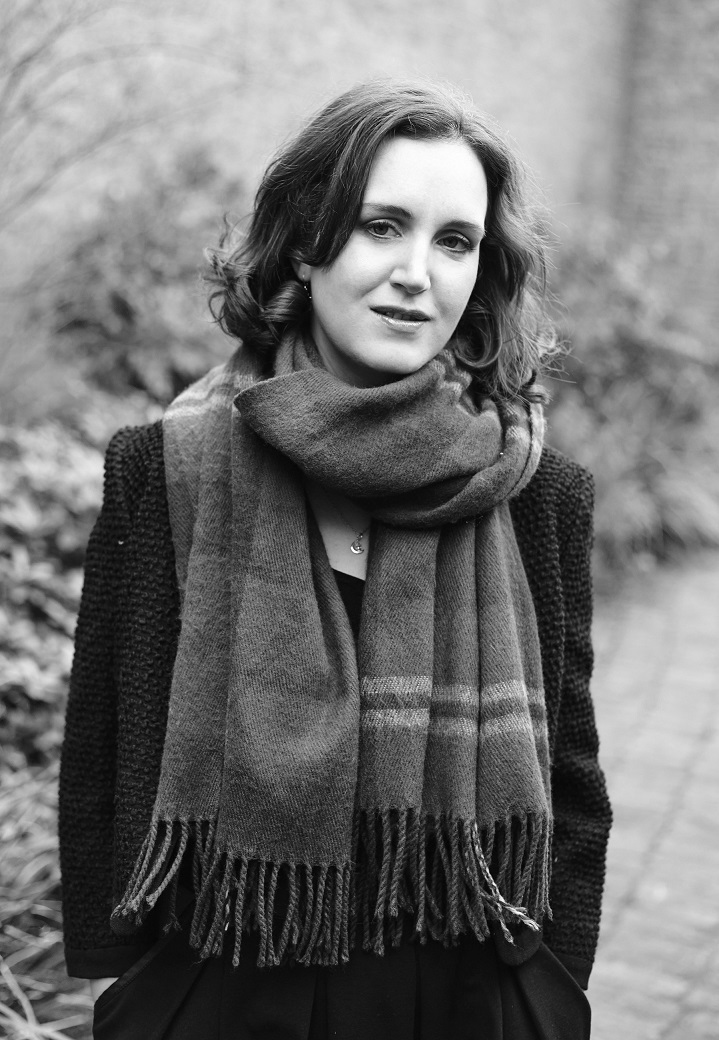LSO, Rattle, Barbican review - symphonies of death and new life | reviews, news & interviews
LSO, Rattle, Barbican review - symphonies of death and new life
LSO, Rattle, Barbican review - symphonies of death and new life
Conception and execution as one, in a new work by Helen Grime and Mahler 9

In the 27 years since he first conducted Mahler’s Ninth Symphony, Sir Simon Rattle has steadily integrated its moodswings and high contrasts into a reading of a piece which now feels more than ever like the work of a man engaged in a form of symphonic stock-taking – before, in the Tenth, setting out on bold new paths.
A masterful display of tempo manipulation from Rattle created a virtuoso exercise in jamming together country dances and urban waltzes, and observing dispassionately what happens when they collide, with the kind of sharp-eyed melancholy we may imagine without much effort in the mind of the child Gustav, peering through the grimy windows at the low-life punters of his father’s down-at-heel tavern. In the Scherzo’s climax and collapse, the waltz of the Symphonie fantastique received an unsparingly grotesque makeover as a precursor to La valse of Ravel.
Colour has become a prime vehicle for expression
Rattle can now do things to – and with – this music that don’t depend for their effect upon extremes of speed, or even dynamic. His trademark pianississimo was kept in the back pocket for the intimations of extinction that close the symphony’s first and last movements. Colour has become a prime vehicle for expression. The first horn was encouraged to take risks with diminished, deathbed tone in the symphony’s halting first bars. String lines were dessicated to a husk then infused with warm, Brahmsian sunshine. Extending the apron of the stage and pulling the orchestra out into the main body of the hall continues to work wonders both for the sound of the LSO, playing with visceral impact to its strengths, and for the much derided Barbican acoustic.
The manic, self-immolating counterpoint of the Rondo-Burleske demands, and here received, feats of legerdemain in orchestral balancing. Mahler was, after all, the greatest conductor of his age, esteemed as such even by those who couldn’t stand his music. There is a relish bordering on sadism for the gauntlet laid down by its moto perpetuo polyphony: Mahler dares the conductor to hold the line and pull out the voices that matter. Even more than in their Sixth together last year, Rattle and the divided LSO violins brought to mind a monstrous, phantasmagorical string quartet, always underlining how often the seconds carry the meat of the argument.
 More impressive still, in its unobtrusive way, was the self-denying skill and restraint of the eight-strong bass section at one of the score’s weirdest and most modern moments. Towards the end of the first movement they are required to accompany a single flute (Adam Walker, simply outstanding all night, and rightly brought to his feet by Rattle) and horn as the two winds reprise the “Bird of Death” dialogue from the Resurrection Symphony – only now with the world-weary, mingled regret and resignation of one who has taken the hard knocks – including, as he began work on the Ninth, news of the heart condition that would kill him.
More impressive still, in its unobtrusive way, was the self-denying skill and restraint of the eight-strong bass section at one of the score’s weirdest and most modern moments. Towards the end of the first movement they are required to accompany a single flute (Adam Walker, simply outstanding all night, and rightly brought to his feet by Rattle) and horn as the two winds reprise the “Bird of Death” dialogue from the Resurrection Symphony – only now with the world-weary, mingled regret and resignation of one who has taken the hard knocks – including, as he began work on the Ninth, news of the heart condition that would kill him.
The evening opened with the second performance (following its premiere last week) of Woven Space: in the words of programme-note writer Paul Griffiths, "a compact, brilliant and energetic symphony". Helen Grime (pictured above by Amy Barton) has composed astutely for her commissioned forces. This is Rattle’s kind of new music, driven forward by, if not excessively reliant upon striding pedal points and skittering ostinato figures. The piece grows appreciably outwards from a slow, rocking branch of an idea planted at the opening of the central movement. Grime has never been one for protracted closures, and the thrust of Woven Space is abruptly cut off at its knees, though one suspects that the harmony has run its course to that very point with the kind of structural ingenuity and economy that would have raised a dry nod of approval from Haydn.
rating
Explore topics
Share this article
The future of Arts Journalism
You can stop theartsdesk.com closing!
We urgently need financing to survive. Our fundraising drive has thus far raised £49,000 but we need to reach £100,000 or we will be forced to close. Please contribute here: https://gofund.me/c3f6033d
And if you can forward this information to anyone who might assist, we’d be grateful.

Subscribe to theartsdesk.com
Thank you for continuing to read our work on theartsdesk.com. For unlimited access to every article in its entirety, including our archive of more than 15,000 pieces, we're asking for £5 per month or £40 per year. We feel it's a very good deal, and hope you do too.
To take a subscription now simply click here.
And if you're looking for that extra gift for a friend or family member, why not treat them to a theartsdesk.com gift subscription?
more Classical music
 Two-Piano Gala, Kings Place review - shining constellations
London Piano Festival curators and illustrious friends entertain and enlighten
Two-Piano Gala, Kings Place review - shining constellations
London Piano Festival curators and illustrious friends entertain and enlighten
 Echo Vocal Ensemble, Latto, Union Chapel review - eclectic choral programme garlanded with dance
Beautiful singing at the heart of an imaginative and stylistically varied concert
Echo Vocal Ensemble, Latto, Union Chapel review - eclectic choral programme garlanded with dance
Beautiful singing at the heart of an imaginative and stylistically varied concert
 Scott, Irish Baroque Orchestra, Whelan, RIAM, Dublin review - towards a Mozart masterpiece
Characteristic joy and enlightenment from this team, but a valveless horn brings problems
Scott, Irish Baroque Orchestra, Whelan, RIAM, Dublin review - towards a Mozart masterpiece
Characteristic joy and enlightenment from this team, but a valveless horn brings problems
 Classical CDs: Voice flutes, flugelhorns and froth
Baroque sonatas, English orchestral music and an emotionally-charged vocal recital
Classical CDs: Voice flutes, flugelhorns and froth
Baroque sonatas, English orchestral music and an emotionally-charged vocal recital
 Kanneh-Mason, Britten Sinfonia, Shave, Milton Court - a grin and a big beaming smile
A pair of striking contemporary pieces alongside two old favourites
Kanneh-Mason, Britten Sinfonia, Shave, Milton Court - a grin and a big beaming smile
A pair of striking contemporary pieces alongside two old favourites
 theartsdesk at the New Ross Piano Festival - Finghin Collins’ musical rainbow
From revelatory Bach played with astounding maturity by a 22 year old to four-hand jazz
theartsdesk at the New Ross Piano Festival - Finghin Collins’ musical rainbow
From revelatory Bach played with astounding maturity by a 22 year old to four-hand jazz
 First Person: Manchester Camerata's Head of Artistic Planning Clara Marshall Cawley on questioning the status quo
Five days of free events with all sorts of audiences around Manchester starts tomorrow
First Person: Manchester Camerata's Head of Artistic Planning Clara Marshall Cawley on questioning the status quo
Five days of free events with all sorts of audiences around Manchester starts tomorrow
 Goldscheider, Brother Tree Sound, Kings Place review - music of hope from a young composer
Unusual combination of horn, strings and electronics makes for some intriguing listening
Goldscheider, Brother Tree Sound, Kings Place review - music of hope from a young composer
Unusual combination of horn, strings and electronics makes for some intriguing listening
 theartsdesk Q&A: composer Donghoon Shin on his new concerto for pianist Seong-Jin Cho
Classical music makes its debut at London's K-Music Festival
theartsdesk Q&A: composer Donghoon Shin on his new concerto for pianist Seong-Jin Cho
Classical music makes its debut at London's K-Music Festival
 Helleur-Simcock, Hallé, Wong, Bridgewater Hall, Manchester review - moving lyricism in Elgar’s concerto
Season opener brings lyrical beauty, crisp confidence and a proper Romantic wallow
Helleur-Simcock, Hallé, Wong, Bridgewater Hall, Manchester review - moving lyricism in Elgar’s concerto
Season opener brings lyrical beauty, crisp confidence and a proper Romantic wallow

Add comment